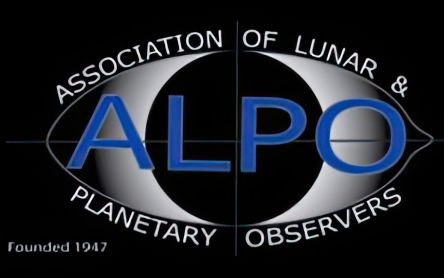Comets Section Blog
ALPO Comet News for March 2025
3/3/2025
The last months of 2024
and the first month of 2025 saw a flurry of bright comet activity.
Unfortunately, the middle months of 2025 are expected to experience a
bright comet drought with no comets expected to become brighter than
10th magnitude until late in the year.
Currently, the
best comets are outbursting 29P/Schwassmann-Wachmann in the evening sky
at 10-11th magnitude, departing C/2023 A3 (Tsuchinshan-ATLAS) in the
morning sky, also at 10-11th magnitude, and the diffuse remains of
C/2024 G3 (ATLAS) for southern hemisphere observers.
The next reasonably
bright comet may be newly announced C/2025 A6 (Lemmon), which will be a
northern hemisphere-only object, peaking at 9th magnitude or perhaps a
few magnitudes brighter in October and November.
ALPO Comet News for February 2025
2/6/2025
It’s been a wild last
few months for comet observers, with not one but two comets reaching
negative magnitudes. Though both C/2023 A3 (Tsuchinshan-ATLAS) and
C/2024 G3 (ATLAS) were at their brightest when within a few degrees of
the Sun, both were observable in bright twilight and were still close to
0th to 1st magnitude as they entered a dark sky.
In February,
C/2023 A3 (Tsuchinshan-ATLAS) fades from 10th to 11th magnitude for
northern hemisphere observers. C/2024 G3 (ATLAS) is still a naked-eye
object with a tail up to 10 degrees long, but only for southern
hemisphere observers. The comet's continued brightness and photogenicity
are amazing since the nucleus of ATLAS disintegrated around January
19/20, about a week after perihelion. The only other comet currently
brighter than magnitude 12 is the outbursting Centaur comet
29P/Schwassmann-Wachmann, which is near opposition in Leo this month.
ALPO Comet News for January 2025
1/7/2025
C/2024 G3 (ATLAS) is on
pace to be the best comet in 2025 as it nears a January 13 perihelion at
0.094 au from the Sun. The comet has been brightening at a nice clip
throughout December and early January. Just after New Year’s, ATLAS
experienced a two-magnitude outburst from magnitude 4 to 2. While
outbursts for comets with small perihelion distances can be a sign of
trouble, ATLAS continues to brighten and is currently around magnitude
1.
ATLAS should only
be observable from the southern hemisphere. Still, if it continues to
brighten at its current rate, it may reach magnitude -4 to -6 and could
be observable from the northern hemisphere, rising 30-40 minutes before
the Sun on the mornings of January 11-12. After perihelion, northern
observers might again catch sight of the comet setting 30-40 minutes
after the Sun on the evenings of January 13-16. Southern hemisphere
observers will have a better view of the comet, especially as it enters
a dark sky a week after perihelion. However, it should have faded to 0th
to 1st magnitude by then.
Unfortunately, no ALPO
Comet News will be issued for January 2025.
ALPO Comet News for December 2024
12/2/2024
As C/2023 A3 (Tsuchinshan-ATLAS) fades from 9th to
11th magnitude in the evening sky, three other comets are expected to be
brighter than magnitude 12 as 2024 comes to a close. Like
Tsuchinshan-ATLAS, two are also limited to northern hemisphere observers,
while the other is only for southern hemisphere observers.
333P/LINEAR is a short-period comet with an 8.7-year
orbital period and should peak a little brighter than magnitude 10 as it
races across the northern sky. The comet won’t stay bright for long and
will have faded to around magnitude 12 by the end of the month. The other
northern comet, C/2022 E2 (ATLAS), will barely break the 12th magnitude
barrier this month before also fading by the end of the month.
In the southern hemisphere, C/2024 G3 (ATLAS) should
rapidly brighten from around magnitude 9th to 5th magnitude.
Unfortunately, it will be a horizon-hugger this month. ATLAS
is still brightening at a pace that suggests it will become a negative
magnitude object at perihelion in January, though it will be too close to
the Sun to be seen by most observers at that time. By the time G3 climbs
back into a dark sky, it will be much fainter, though possibly still a
naked-eye object.
The monthly ALPO Comet News PDF can be found here.
All are encouraged to join the discussion over at
Cloudy Nights.
ALPO Comet News for November 2024
11/2/2024
C/2023 A3 (Tsuchinshan-ATLAS) did not disappoint last month. After reaching a brilliant peak at magnitude -3 to -4, though it was only within a few degrees of the Sun at the time, the comet reappeared in the evening sky at around 0th magnitude. Though it quickly faded as it moved higher in the sky, a tail up to 20 degrees in length was visually observed. Imagers also detected the predicted anti-tail. Tsuchinshan-ATLAS starts November in the evening sky at 6th magnitude. Since it is moving away from the Earth and Sun, it will continue to fade and should be around magnitude 9 at the end of the month.
November will be the last month to see 13P/Olbers visually as it approaches solar conjunction. Northern hemisphere observers may be able to observe short-period comet 333P/LINEAR, which may reach 10th magnitude at the end of the month in the morning sky. While 333P/LINEAR will be a low-elevation object for southern hemisphere observers, they will have C/2024 G3 (ATLAS) to themselves. C/2024 G3 comes to perihelion in January at a close 0.09 au from the Sun. Though it will be located very close to the Sun when at its brightest, there is an outside chance that this could be a nice object from the southern hemisphere after its perihelion.
The monthly ALPO Comet News PDF can be found here. All are encouraged to join the discussion over at Cloudy Nights.
